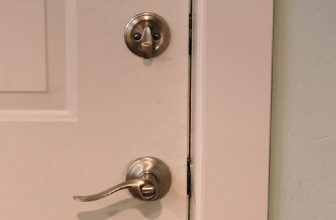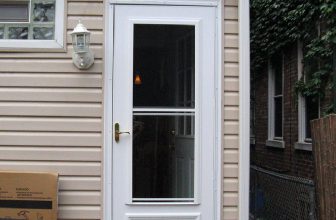How to Cover Glass Cabinet Doors
Covering glass cabinet doors is an easy way to update your kitchen instantly. It can add color to dull cabinets and provide a creative backdrop for storing dishes, cookware, and other kitchen items. Additionally, it helps protect the contents of the cabinets from dust, dirt, and other environmental elements. Plus, with so many DIY options available, you can easily customize the look of your cabinets to match any style or color scheme.
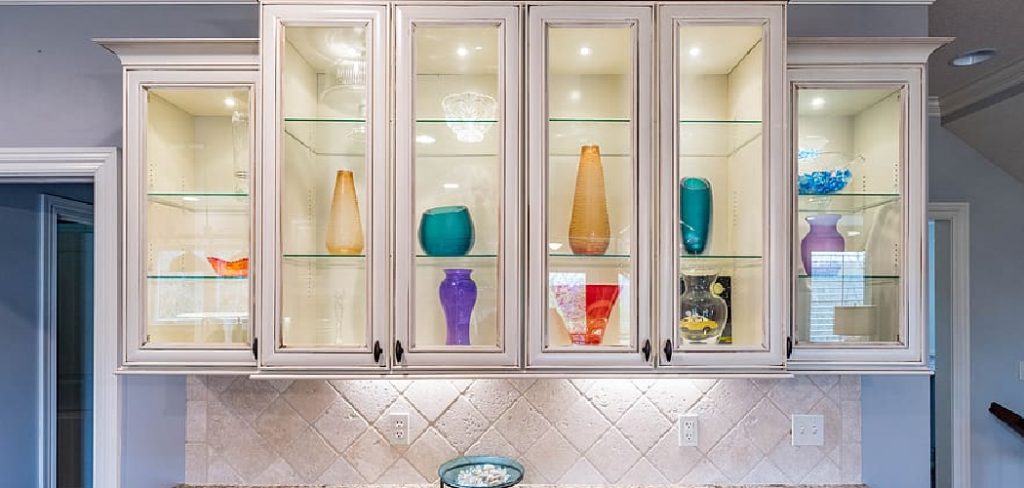
Covering glass cabinet doors offers a number of advantages. First, it can be an affordable way to update the look of your kitchen or living room without replacing the entire cabinets. The coverings also help protect the contents from dust and other particles. Additionally, if you are looking for more privacy in a space, then covering up the glass can help provide more anonymity. You can find step-by-step instructions on how to cover glass cabinet doors in this blog article.
Step-by-step Instructions for How to Cover Glass Cabinet Doors
Step 1: Inspect the Cabinet Door
The first step in the process is to make sure that you are working with a clean and dry cabinet door. Check for any signs of damage, including chipped or cracked glass. Once you have inspected the door, measure it to determine how much fabric or paper you will need to cover it. Make sure to measure the door’s width, length, and depth.
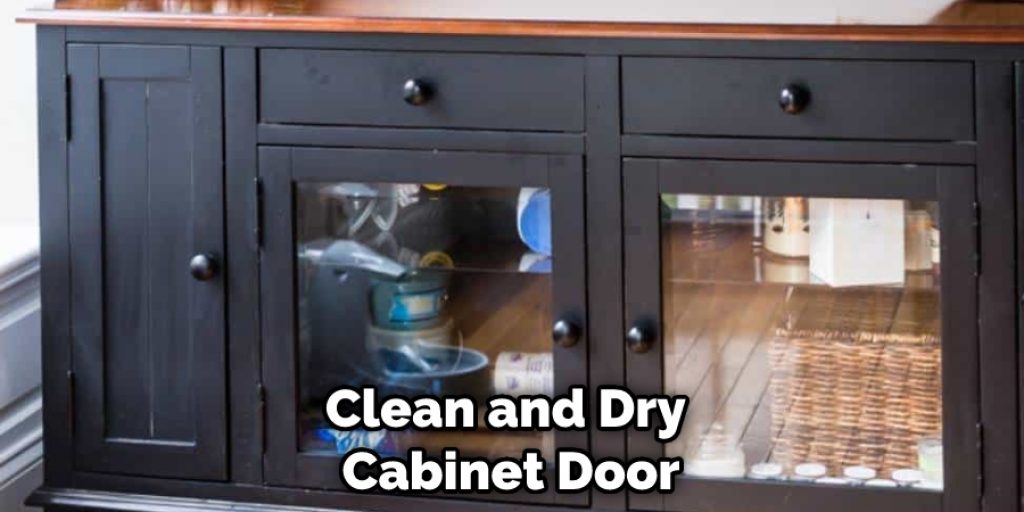
Step 2: Choose Your Materials
Decide what material you would like to use to cover your glass cabinet doors. You may choose fabric, wallpaper, or contact paper. After selecting a material, cut it to size according to the measurements you took in step 2. Make sure that you leave enough extra material around the edges of the door so it can be secured properly.
Step 3: Secure the Material
Use a staple gun or another adhesive to attach the material to the back of the cabinet door. Start from one corner and work your way out until all of the material is secured. Once the material is secure, you can use a pair of scissors or a razor blade to trim away any excess material.
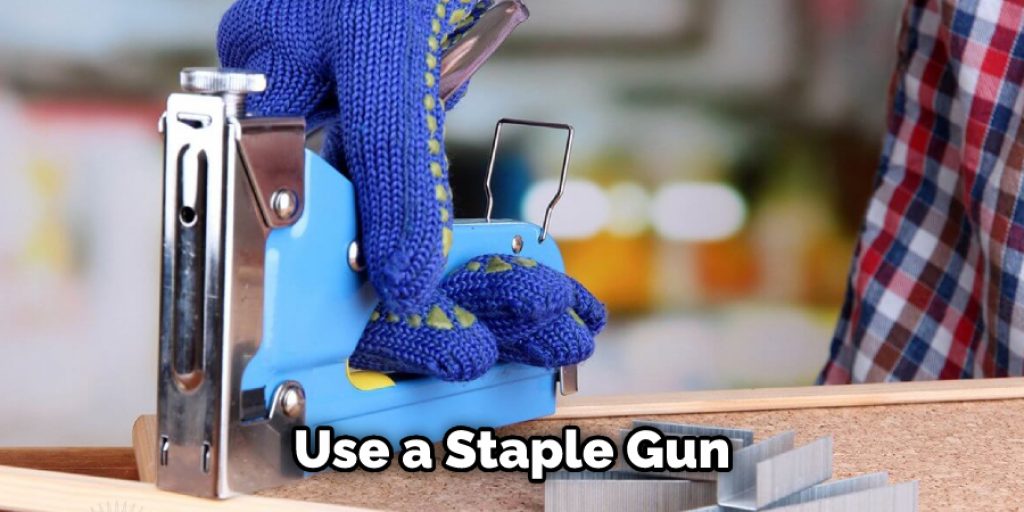
Step 4: Attach Adhesive Felt Pads
Attach adhesive felt pads to the corners of the cabinet door to protect your furniture and walls from scratches. This will also help prevent creasing when opening and closing. You can add decorative cabinet pulls or knobs to the doors to complete your project. Choose a style that fits with your décor and attach it according to the manufacturer’s instructions.
Step 5: Clean and Polish the Door
Give your newly covered glass cabinet door a good cleaning with some glass cleaner and a lint-free cloth. You can also use furniture polish to ensure that it stays looking its best. Congratulate yourself on a job well done, and enjoy the new look of your glass cabinet door. Your efforts will be rewarded when you admire your handiwork every time you open and close your cabinet.
Safety Precautions for How to Cover Glass Cabinet Doors

- Measure the dimensions of your cabinet doors accurately before purchasing the covering material.
- Choose a relatively thick and durable fabric to ensure a good finish and longer-lasting protection for the cabinet doors.
- Consider using spray adhesive to fix the fabric in place, as it will last longer than regular glue or paste.
- When applying the fabric to the cabinet, use a damp cloth or sponge to remove any air bubbles that may have formed.
- Be sure to cover any sharp edges of the glass so as not to cut yourself while handling the doors.
- Use extra caution when handling large, heavy pieces of glass that may be part of the cabinet door.
- When cutting the fabric to size, use a sharp blade or scissors, and make sure to do this on a stable surface for accuracy.
- Wear protective gear such as gloves and eye protection when handling the glass doors or materials used in covering them. This will help reduce your risk of injury while working.
This article has provided you with some important tips to keep in mind when covering glass cabinet doors. Following these safety precautions will help ensure a successful and safe project.
How Can One Avoid Bubbles or Wrinkles When Covering the Glass With Fabric?
When it comes to covering glass cabinet doors with fabric, the key is to take your time and avoid rushing. Once you have cut the fabric to size and applied an adhesive spray onto both the backside of the fabric and the front of the glass on all four sides, lay the fabric flat against the glass door. Be sure that you have laid it on evenly and with no wrinkles.
Next, use a squeegee to press the fabric into the glass, lightly dabbing at any air bubbles that may have formed while pressing down. If you find that large amounts of air are trapped between the glass and fabric or if wrinkles have appeared, gently lift up one corner of the fabric to allow the air to escape and then smooth back down. Do not pull too hard on the fabric, as this could cause it to rip or stretch in places. Finally, trim off any excess fabric at the edges of the glass door with a utility knife or scissors.
How Much Fabric is Needed to Cover a Set of Glass Cabinet Doors Fully?

It is best to accurately measure the cabinet doors before buying the fabric. It is important to purchase enough fabric to cover all of the glass panels and any parts of the door frames that will be visible. A good rule of thumb is to add 5 inches on each side, top, and bottom for overlap when measuring each cabinet door. For example, if the cabinet doors are 20 inches wide and 40 inches tall, the fabric should be 30 inches wide by 50 inches tall for each door.
When deciding how much fabric to purchase for a set of glass cabinet doors, consider the pattern or texture of the fabric. If it has an intricate design or thin stripes, add more fabric for the necessary overlaps. If possible, purchase an extra yard of fabric in case of mistakes or if more overlap is needed. When it comes to covering glass cabinet doors with fabric, having enough material is essential for a successful project. Taking accurate measurements and adding generous amounts of extra fabric will ensure that the job is done right the first time.
How Do You Clean Glass Cabinet Doors When They Are Covered in Fabric?
Cleaning glass cabinet doors when they are covered in fabric is slightly different from cleaning regular glass. The best way to clean them is to use gentle, natural cleaners and avoid harsh chemicals or abrasive tools that could damage the fabric covering. First, make sure to dust off the surface of the fabric-covered door with a soft cloth. Then, mix a solution of warm water and mild soap in a spray bottle. Spray the fabric-covered door with the cleaning solution and let it sit for two minutes before wiping it down with a soft cloth or sponge.
For tough stains, use a soft brush to scrub away any dirt or debris lightly. Be sure to rinse off the residue from the cleaning solution with a clean, damp cloth when finished. If you want to be extra cautious and protect the fabric from further damage, consider using a fabric protector spray after cleaning. This will help prevent future stains and keep your doors looking good as new.
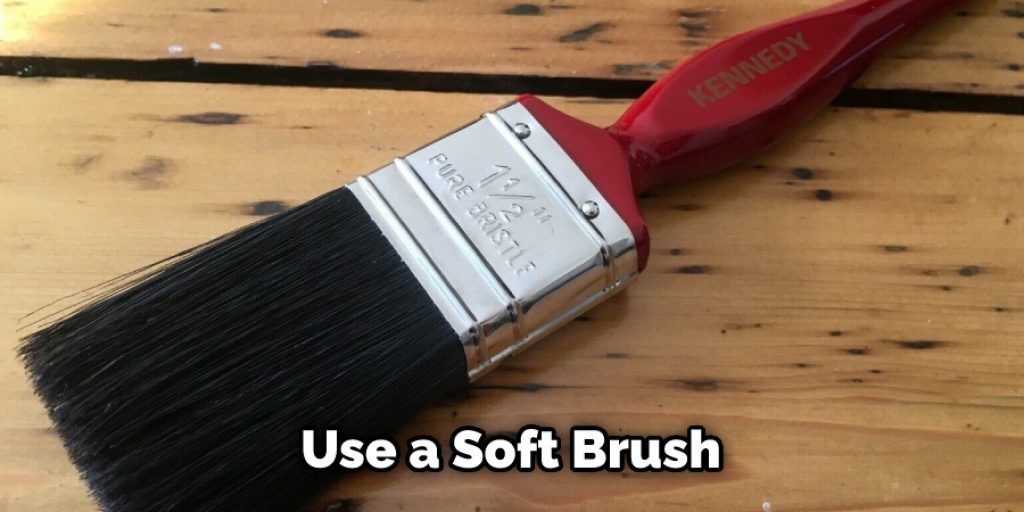
What Kind of Adhesive Should Be Used to Attach Fabric to the Glass Cabinet Doors?
When it comes to adhesives, there are lots of options available on the market. However, when it comes to covering glass cabinet doors with fabric, you’ll want to use a product that is specifically designed for glass surfaces, such as double-sided adhesive tape or contact cement.
Double-sided adhesive tape is often preferred because it’s quicker and easier to apply, while contact cement creates a more secure bond that is ideal for heavier fabrics. Before you begin, make sure to read the instructions on your adhesive product of choice thoroughly. When using double-sided adhesive tape, start by measuring and cutting the fabric so it fits snugly against the glass cabinet door.
Then, peel back one of the two adhesive strips and attach it to the fabric before carefully pressing it against the glass door. Make sure to smooth out any wrinkles or bumps as you go. Once both sides of the fabric are attached, use a utility knife or scissors to trim around the edges for a neat finish.
How Can One Prevent Dust and Debris From Collecting on the Fabric-covered Glass Cabinets Doors?
The best way to keep dust and debris from collecting on fabric-covered glass cabinet doors is through periodic cleaning and maintenance. A vacuum or a soft cloth can be used for light dusting. For deeper cleaning, use a gentle cleaner suited for the type of fabric used to cover the door. It’s important that any cleaners be tested in an inconspicuous area to ensure they won’t cause any damage.
It’s also important to take care when removing items from the cabinet, as this can create dust and debris that will settle on the fabric-covered doors. Make sure to clean up any spills promptly. Additionally, you may want to consider switching out the fabric covering periodically, as dust can build up and create an unhealthy environment. Finally, consider using a fabric sealant on the cabinet doors to help keep dirt and debris at bay. The sealant will not only protect the fabric from being damaged by spills or dust particles but also add a layer of protection against future damage.
Conclusion
One disadvantage to covering glass cabinet doors is that it can be difficult to measure and cut the material used for covering properly. Additionally, if the material is too thick, it may not fit inside the frame of the door. If it is too thin, it may become loose or tear easily. Another disadvantage is that covering a glass door with fabric or paper may reduce visibility, making it hard to determine what is inside the cabinet.
In conclusion, covering glass cabinet doors is a great way to bring a fresh look and feel to any room. There are many options available, ranging from traditional curtains or blinds to modern solutions like film or decals. Whichever option you choose, ensure that the style and materials match your home’s overall aesthetic. Additionally, remember that proper installation is essential for the best results. I hope reading this post has helped you learn how to cover glass cabinet doors. Make sure the safety precautions are carried out in the order listed.


